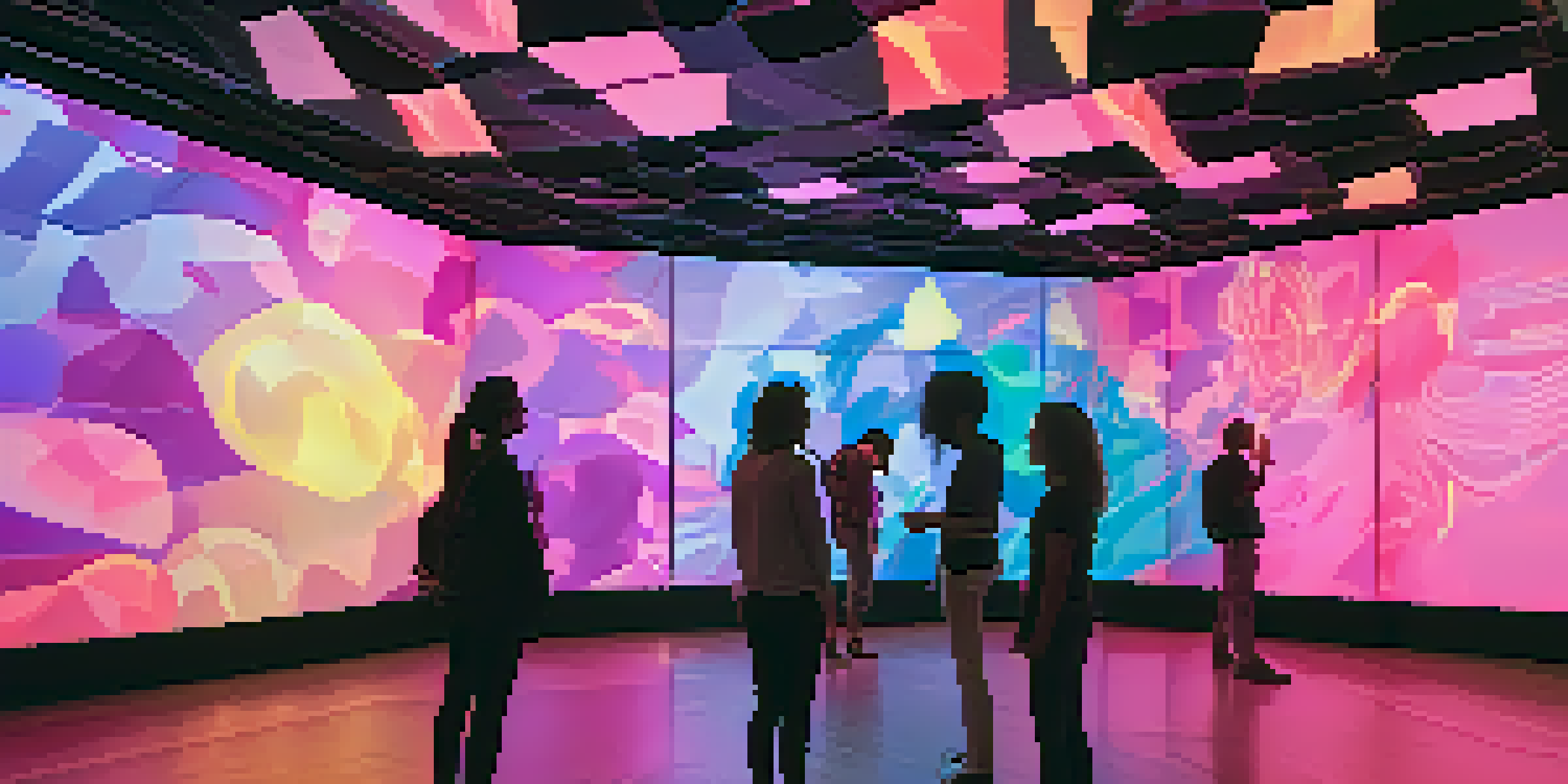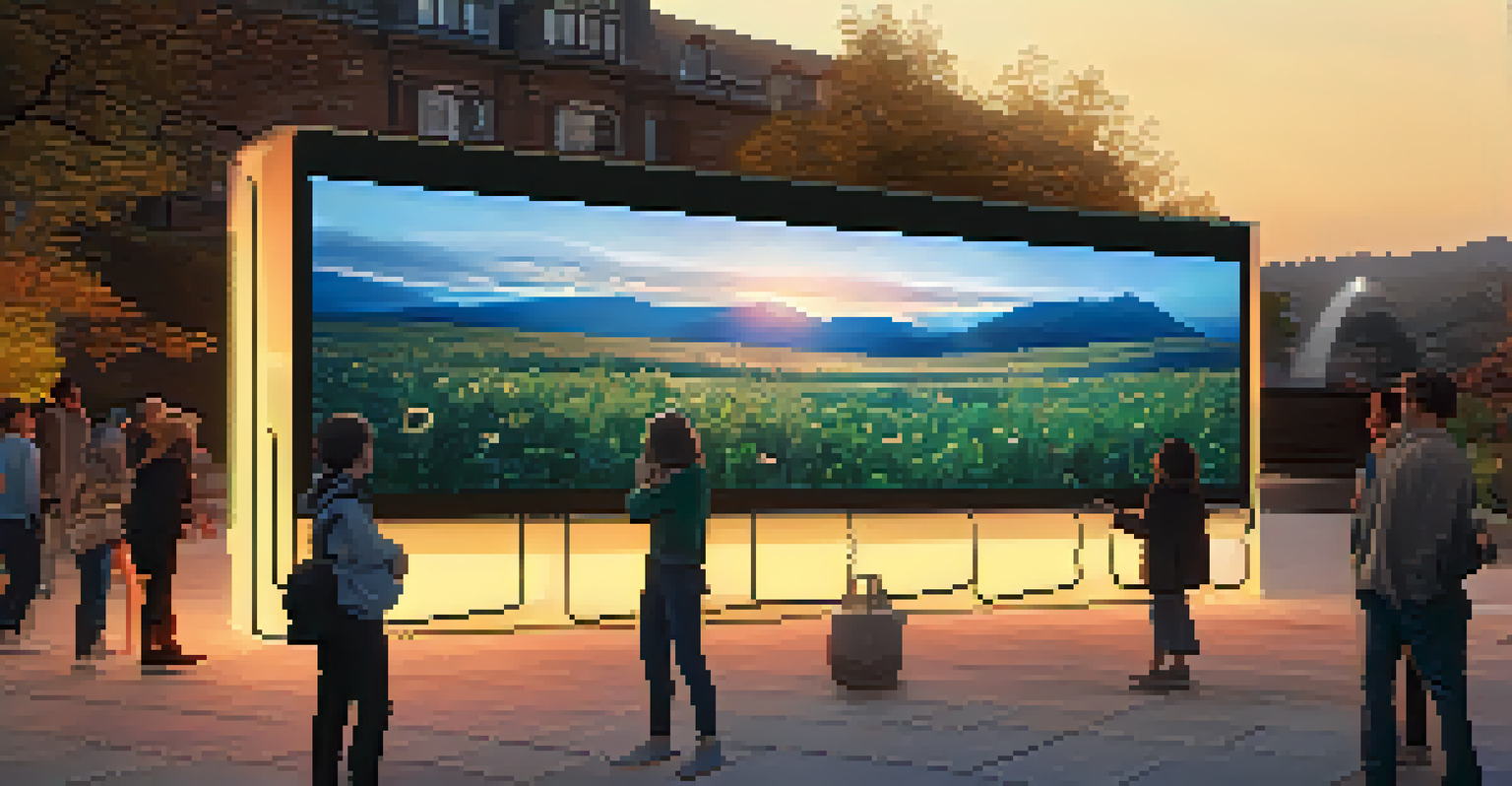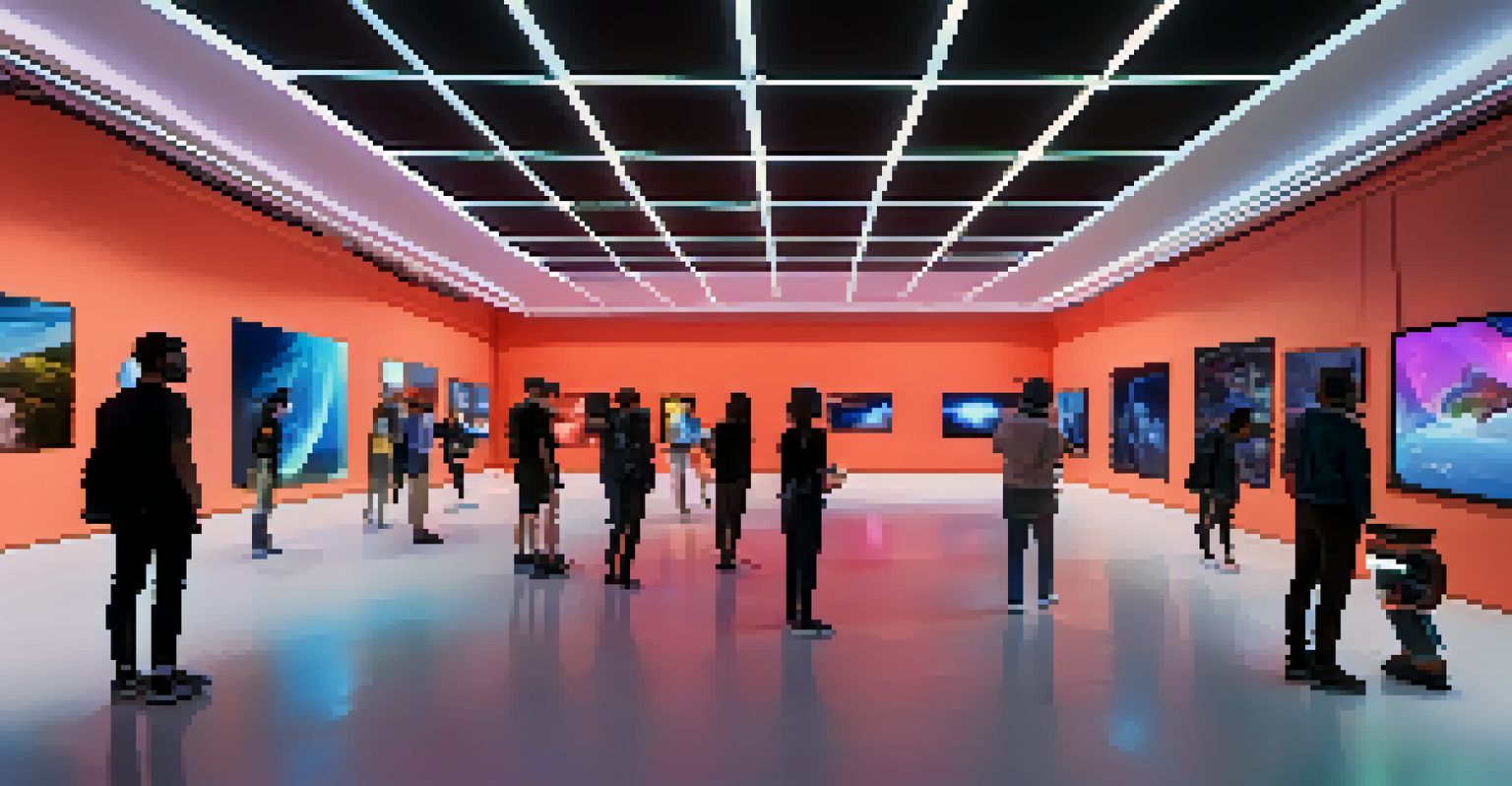Art and Technology: The Rise of Digital Installations

The Intersection of Art and Technology in Modern Installations
In recent years, the lines between art and technology have blurred, leading to the emergence of digital installations. These innovative works of art utilize digital tools and platforms to create immersive experiences that engage viewers in unique ways. From interactive projections to virtual reality environments, this intersection invites artists to explore new creative avenues.
Art is not a mirror held up to reality, but a hammer with which to shape it.
Digital installations are not just about showcasing art; they also involve audience participation, making the experience dynamic and ever-changing. For instance, visitors might influence the artwork through their movements or choices, creating a personal connection between the viewer and the installation. This participatory aspect transforms the role of the audience from passive observers to active contributors.
As technology continues to advance, artists are increasingly experimenting with techniques and mediums that were once unimaginable. This evolution not only challenges traditional art forms but also expands the possibilities of artistic expression. As a result, we are witnessing a vibrant landscape of creativity that is redefining what art can be.
Historical Context: The Roots of Digital Art
To understand the rise of digital installations, we must first look back at the history of digital art. The journey began in the late 20th century when artists started experimenting with computers as creative tools. Early pioneers used simple graphics and animations, laying the groundwork for what would evolve into a rich and diverse field.

As technology progressed, so did the complexity and sophistication of digital artworks. The introduction of software like Photoshop and platforms for 3D modeling allowed artists to push boundaries and create more intricate pieces. This evolution set the stage for the digital installations we see today, which often blend various forms of media including video, sound, and interactivity.
Art Meets Technology in Installations
Digital installations combine art and technology to create interactive and immersive experiences that engage audiences in innovative ways.
Notably, the advent of the internet opened up new channels for artists to showcase their work globally. Online galleries and social media platforms became essential tools for sharing digital art, fostering a community of creators and enthusiasts. This interconnectedness has fueled a renaissance in digital installations, making art more accessible and engaging than ever before.
Key Features of Digital Installations
Digital installations are characterized by their use of technology to create interactive and immersive experiences. One of the most captivating features is the ability to engage multiple senses, often combining visuals, sound, and even tactile elements. This multisensory approach captivates audiences, drawing them into the artwork in ways that traditional forms may not.
The future belongs to those who believe in the beauty of their dreams.
Another hallmark of digital installations is their adaptability. Unlike static artworks, these installations can change and evolve over time, whether through programmed algorithms or real-time audience interaction. This fluidity keeps the experience fresh, encouraging visitors to return and discover something new each time.
Moreover, digital installations often challenge conventional notions of space and place. Artists can project their work onto any surface or create entirely virtual environments, breaking free from the constraints of a traditional gallery. This flexibility allows for innovative storytelling and exploration, inviting viewers to experience art in unconventional settings.
Notable Digital Installations That Captivated Audiences
Several digital installations have made significant impacts on the art world, capturing the imagination of audiences everywhere. One standout example is 'The Obliteration Room' by Yayoi Kusama, which transforms a completely white room into a vibrant explosion of color through audience participation. Visitors are given colorful dot stickers to place anywhere, creating a collaborative work of art that evolves uniquely with each interaction.
Another memorable installation is 'Refik Anadol's Infinity Room,' which utilizes projections and mirrors to create an immersive experience that feels both infinite and intimate. This work invites viewers to lose themselves in a mesmerizing dance of light and color, blurring the lines between reality and illusion. Such installations exemplify how digital art can evoke deep emotional responses.
Interactivity Enhances Viewer Engagement
The participatory nature of digital art transforms viewers from passive observers to active contributors, fostering a deeper connection with the artwork.
These examples highlight the power of digital installations to create shared experiences that resonate with diverse audiences. They not only showcase the artists' creativity but also encourage deep reflection and conversation about the relationship between technology and art.
The Role of Interactivity in Digital Art
Interactivity is a defining feature of digital installations that sets them apart from traditional artworks. By inviting viewers to actively participate, these installations foster a deeper connection and engagement. For instance, installations may respond to audience movements or reactions, making each visitor's experience unique and personal.
This interactive element encourages exploration and curiosity, as viewers can manipulate aspects of the artwork, leading to a sense of ownership. People may find themselves experimenting with various inputs to see how they affect the piece, which can spark creativity and inspire new ideas. This hands-on approach transforms the experience from mere observation into an opportunity for exploration.
Moreover, interactivity can extend beyond physical engagement to include digital participation. Many installations incorporate social media or mobile technology, allowing viewers to share their experiences online. This integration not only amplifies the artwork's reach but also fosters a community of individuals who can connect over shared experiences and interpretations.
The Future of Digital Installations in Art
As technology continues to evolve, the future of digital installations looks promising and full of potential. Emerging technologies like artificial intelligence and augmented reality are set to revolutionize how artists create and present their work. These advancements will likely lead to even more interactive and immersive experiences that challenge our perceptions of art.
Furthermore, as digital installations gain popularity, we can expect to see more collaborations between artists and technologists. This partnership will enable the development of cutting-edge tools and techniques, pushing the boundaries of creativity and innovation. Artists will have the opportunity to explore new narratives and themes, making their work even more relevant in today's fast-paced world.
Future of Digital Art is Promising
Emerging technologies like AI and augmented reality are set to revolutionize digital installations, pushing creative boundaries and enhancing artistic expression.
Ultimately, the rise of digital installations signifies a shift in the art landscape, one that embraces both technology and creativity. As we look ahead, it’s exciting to imagine how these evolving forms of art will continue to shape our cultural experiences and influence future generations of artists.
Challenges and Considerations in Digital Art
While digital installations offer exciting possibilities, they also come with their own unique set of challenges. One significant concern is the rapid pace of technological change, which can make certain installations obsolete quickly. Artists must stay updated with the latest advancements to ensure their work remains relevant and engaging.
Additionally, issues of accessibility and inclusivity arise in the realm of digital art. Not all audiences have equal access to the technology required to experience these installations fully. Artists and curators need to consider how to create inclusive experiences that can reach a broader audience, ensuring that digital art is accessible to everyone.

Lastly, the preservation of digital art poses a challenge for institutions and artists alike. Unlike traditional artworks that can be physically stored, digital pieces require ongoing maintenance and updates to remain functional. Museums and galleries must develop new strategies for preserving these dynamic works while also respecting the artists' original intentions.